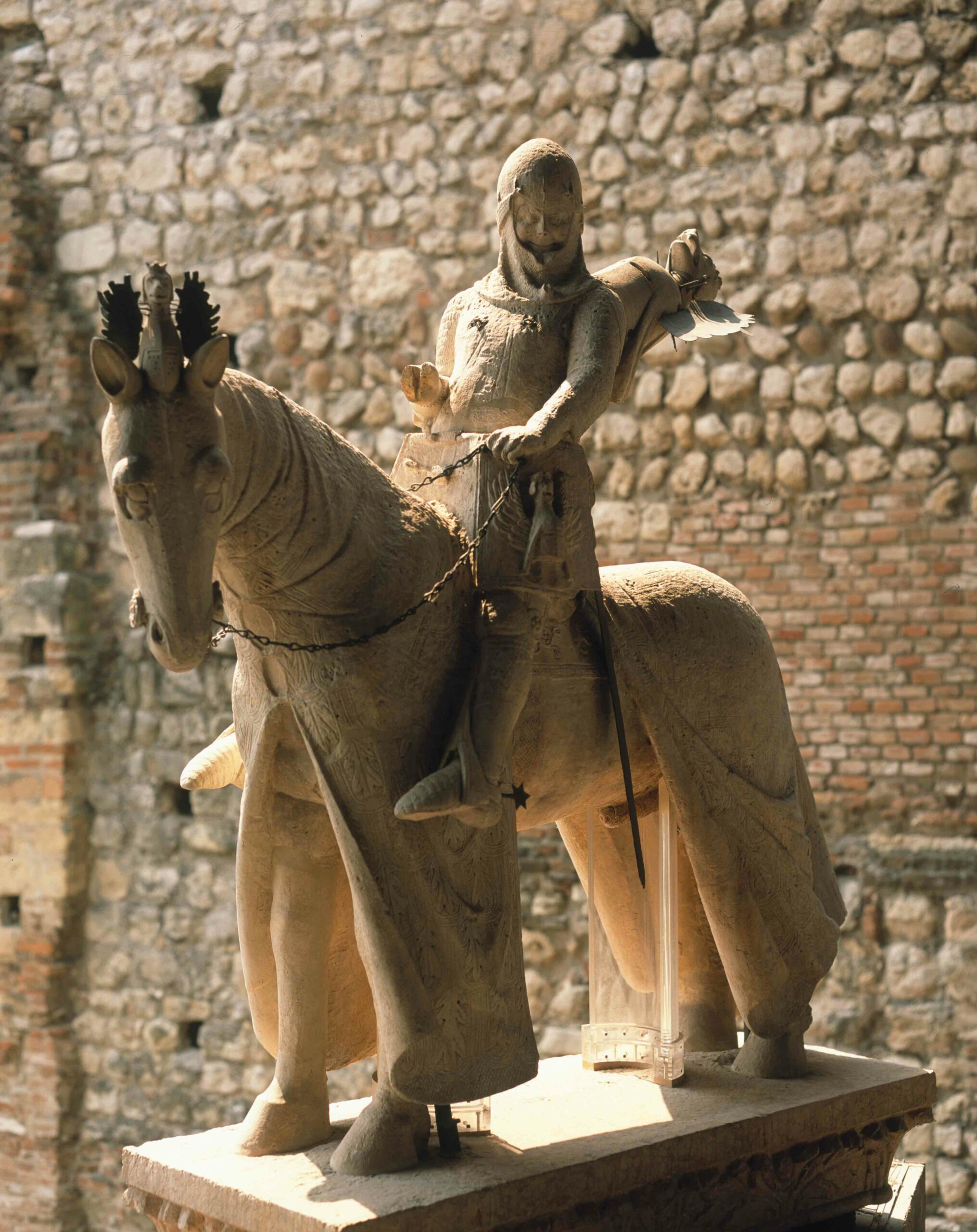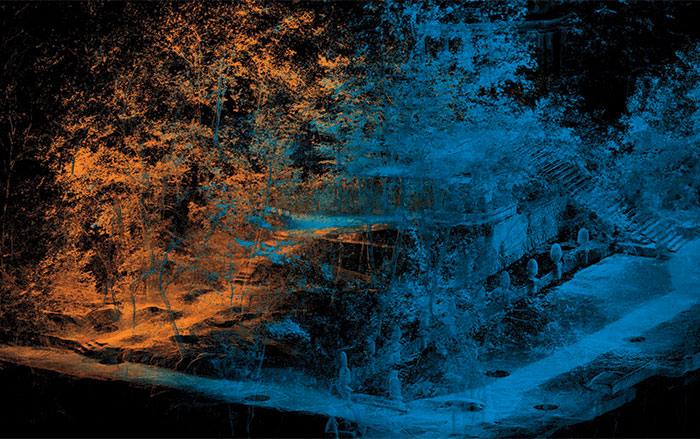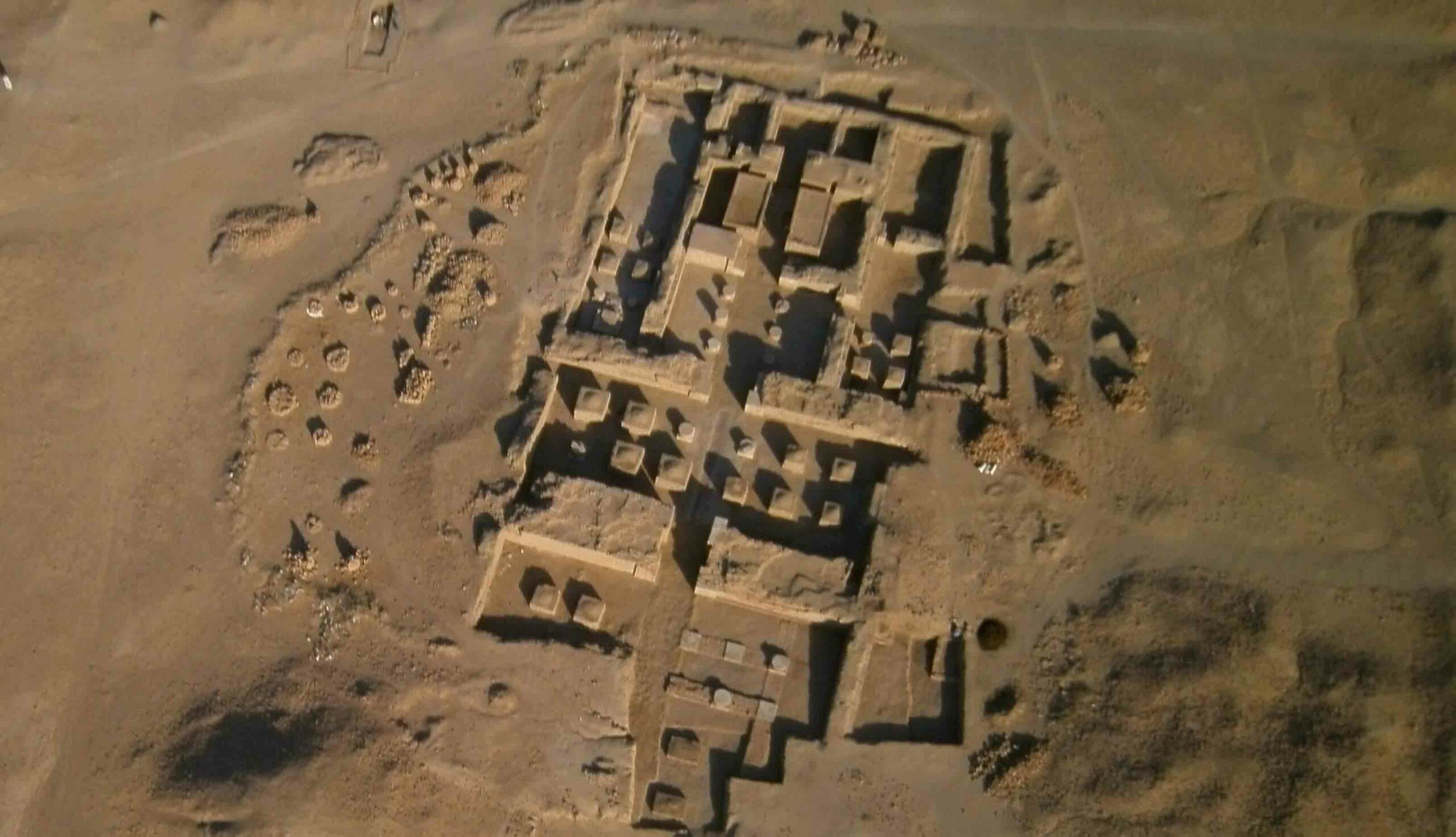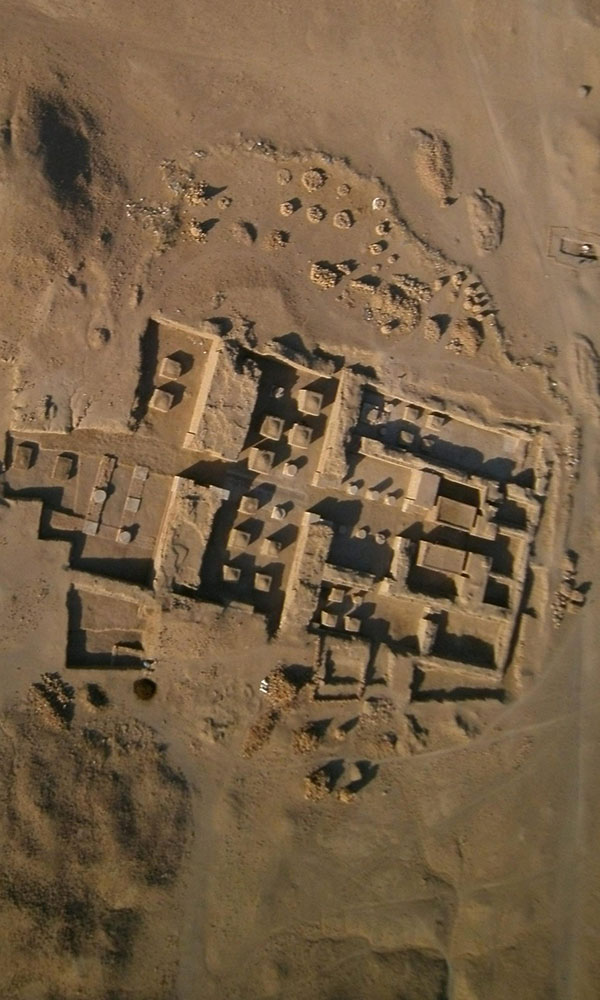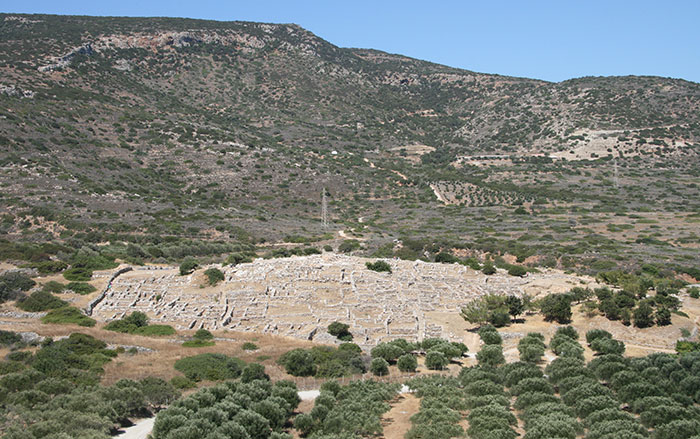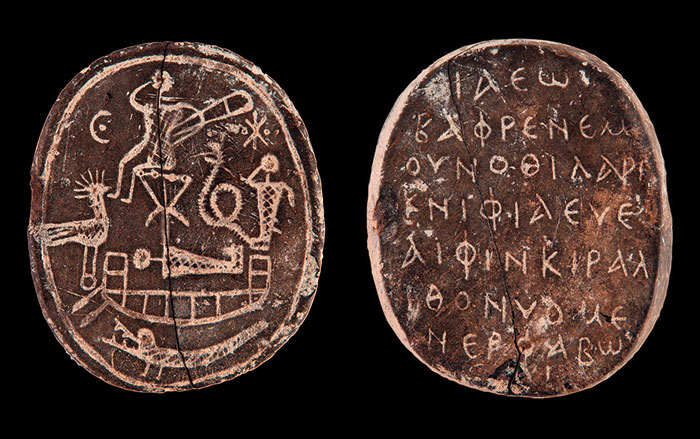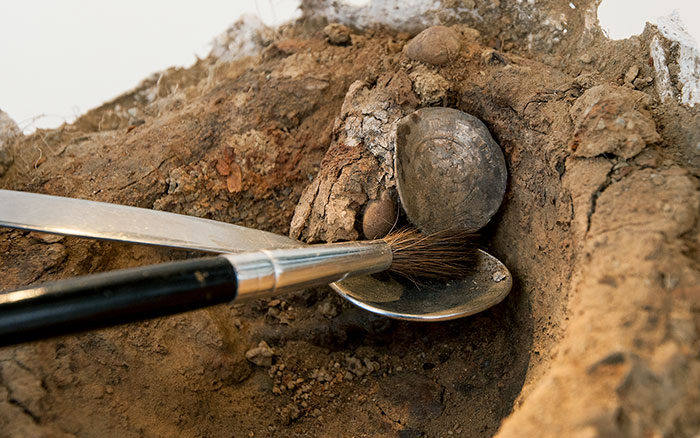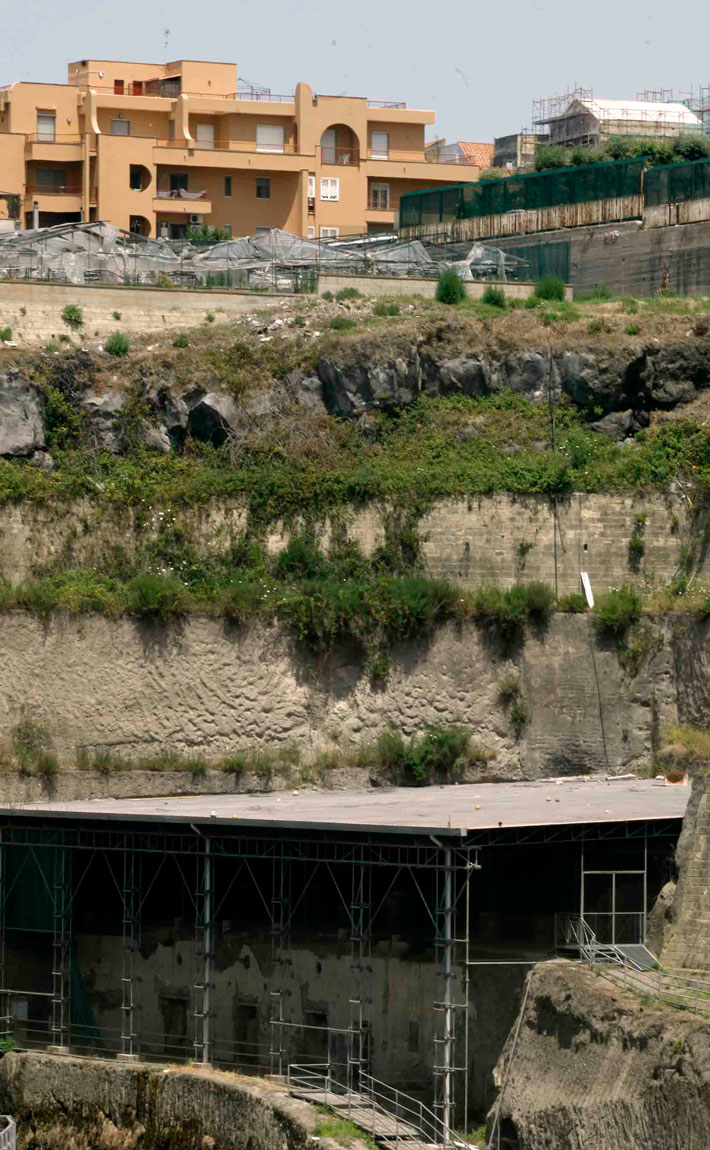
Herculaneum’s Villa of the Papyri was one of the most luxurious Roman properties to have been buried by the eruption of Mount Vesuvius in A.D. 79. The sprawling waterfront estate (on which the J. Paul Getty Museum in Los Angeles is modeled) likely belonged to Lucius Calpurnius Piso, father-in-law of Julius Caesar. It contained countless masterpieces of ancient art, but its greatest treasure might have been its library—and the nearly 1,800 papyrus scrolls that were discovered there in the mid-eighteenth century. It is the only library from antiquity to have survived. When Vesuvius erupted, the Villa of the Papyri was hit by a 600-degree Fahrenheit blast of hot gas and ash, which instantly carbonized the papyrus scrolls, transforming them into charred cylindrical lumps, and, surprisingly, preserving them. Since their discovery more than 250 years ago, scholars have attempted to unroll and translate the fragile scrolls, many of which contain Greek texts on Epicurean philosophy, particularly some written by the philosopher Philodemus. Recently, a team of scientists has pioneered a new, safer method of deciphering the texts. Since unrolling causes irreparable harm to the brittle artifacts, researchers have turned to noninvasive technologies such as X-rays, digital photography, and microscopy. “The results show that it is possible to read the Herculaneum papyri without needing to open them, which always involves the risk of damage and loss of content,” says Vito Mocella of the National Research Council in Italy, which leads the project.
Viewing the writing on the interiors of the rolled-up scrolls, however, remains difficult. A major obstacle is the physical similarity of the ink and the papyrus. The Romans used a carbon-based ink made from smoke residues, which has a similar density to the carbonized papyrus, making it hard to distinguish between them, even with advanced technologies. The recent experimental project, which took place at the European Synchrotron Radiation Facility in France, employed X-ray phase-contrast tomography (XPCT). XPCT is particularly useful in identifying the characteristics of hidden, internal structures. This procedure is able to detect subtle differences in the way X-rays are absorbed or refracted, even among similar substances. “It was clear to me that this technique could be decisive for reading the Herculaneum papyri, although to do this it was necessary to push the potential of this experimental technique,” says Mocella.
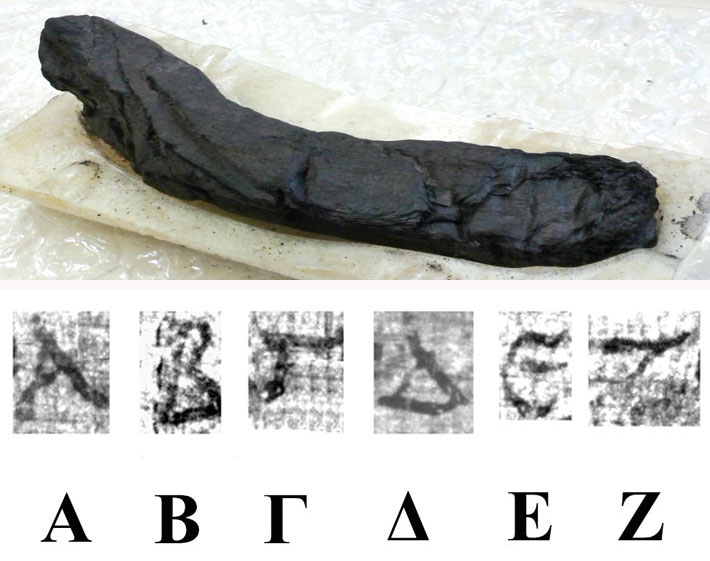
The team examined two scrolls, housed at the French Institute, that had been given to Napoleon in 1802. Using XPCT, they were able to identify individual Greek letters as well as words, even within the interior sections of the rolled-up scrolls. Further, by analyzing the handwriting style on these papyri, they were able to date the text to between 75 and 50 B.C. Its resemblance to text in other Herculaneum papyri led the team to conclude that one of their papyri likely contains an unknown work by Philodemus. The project is not capable of—nor concerned at this time with—unveiling whole, coherent Greek phrases, but rather in refining the technique. “We will definitely be able to read significant portions of text,” says Mocella. “Until now this has been a project driven by curiosity, and we are waiting for further support.”

Many of the ancient world’s literary masterpieces remain lost—for example, only seven of the purported 123 plays of Sophocles exist today. It remains to be seen what unknown works might lie among the unread Herculaneum papyri. But according to Mocella, there is a real possibility of recovering long-vanished classics of ancient Greek and Roman literature, especially since additional scrolls may still be discovered in the unexcavated parts of the villa.




